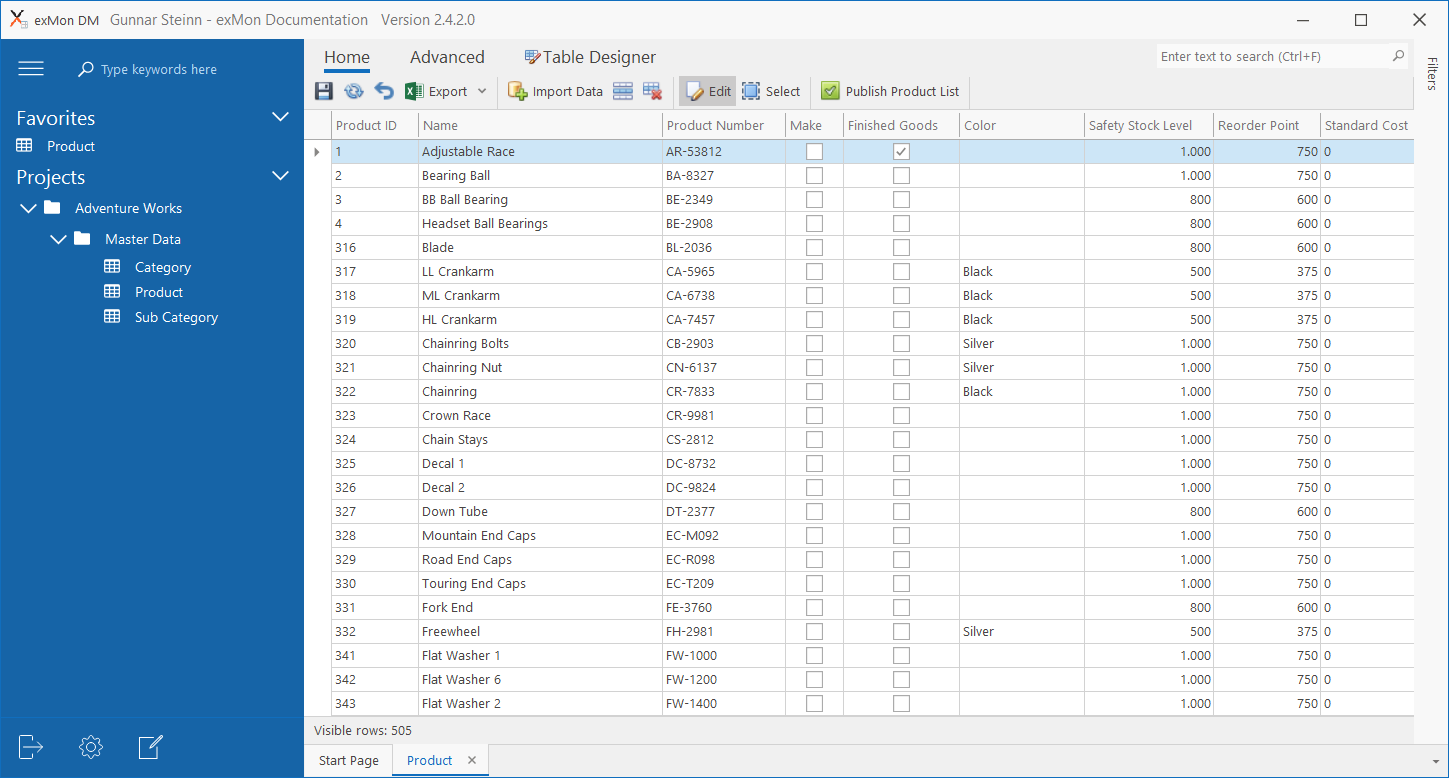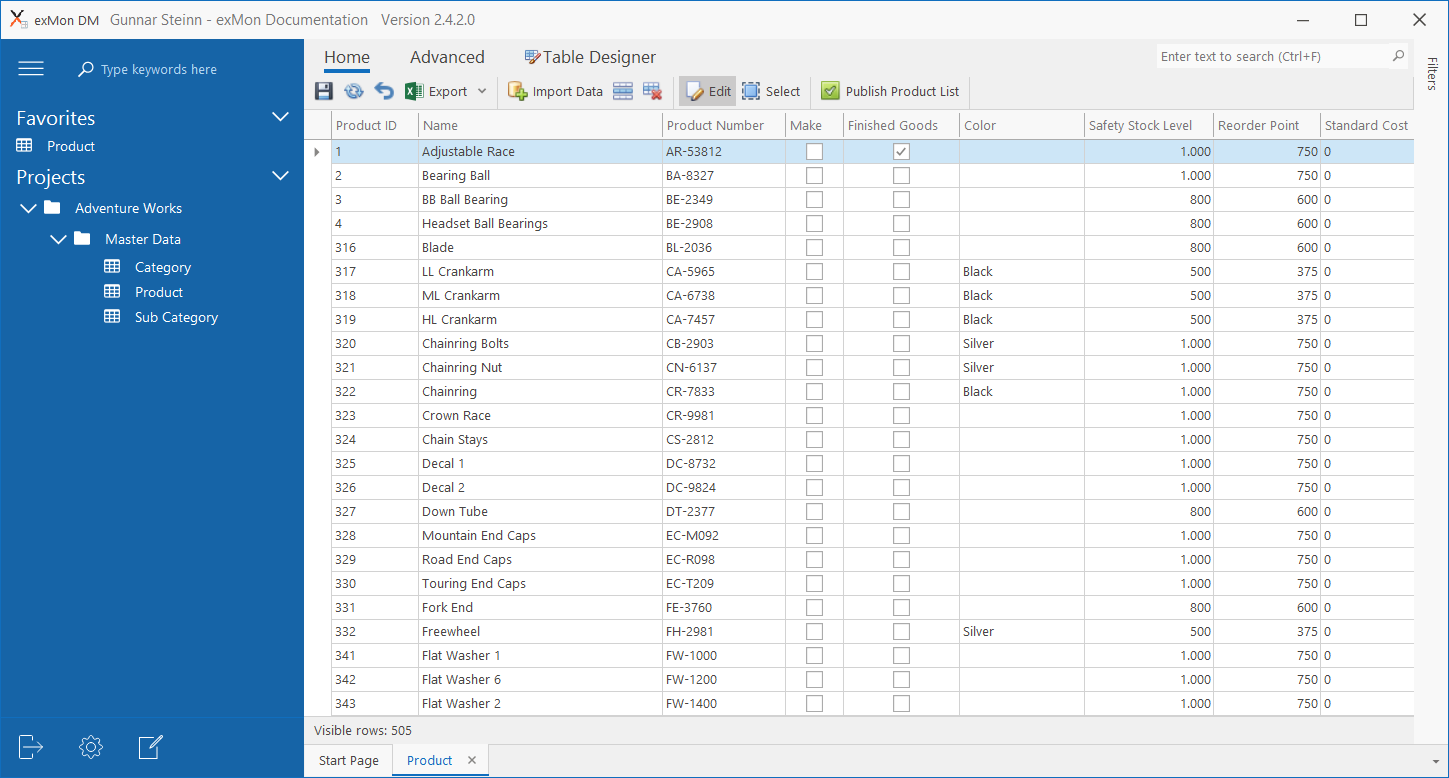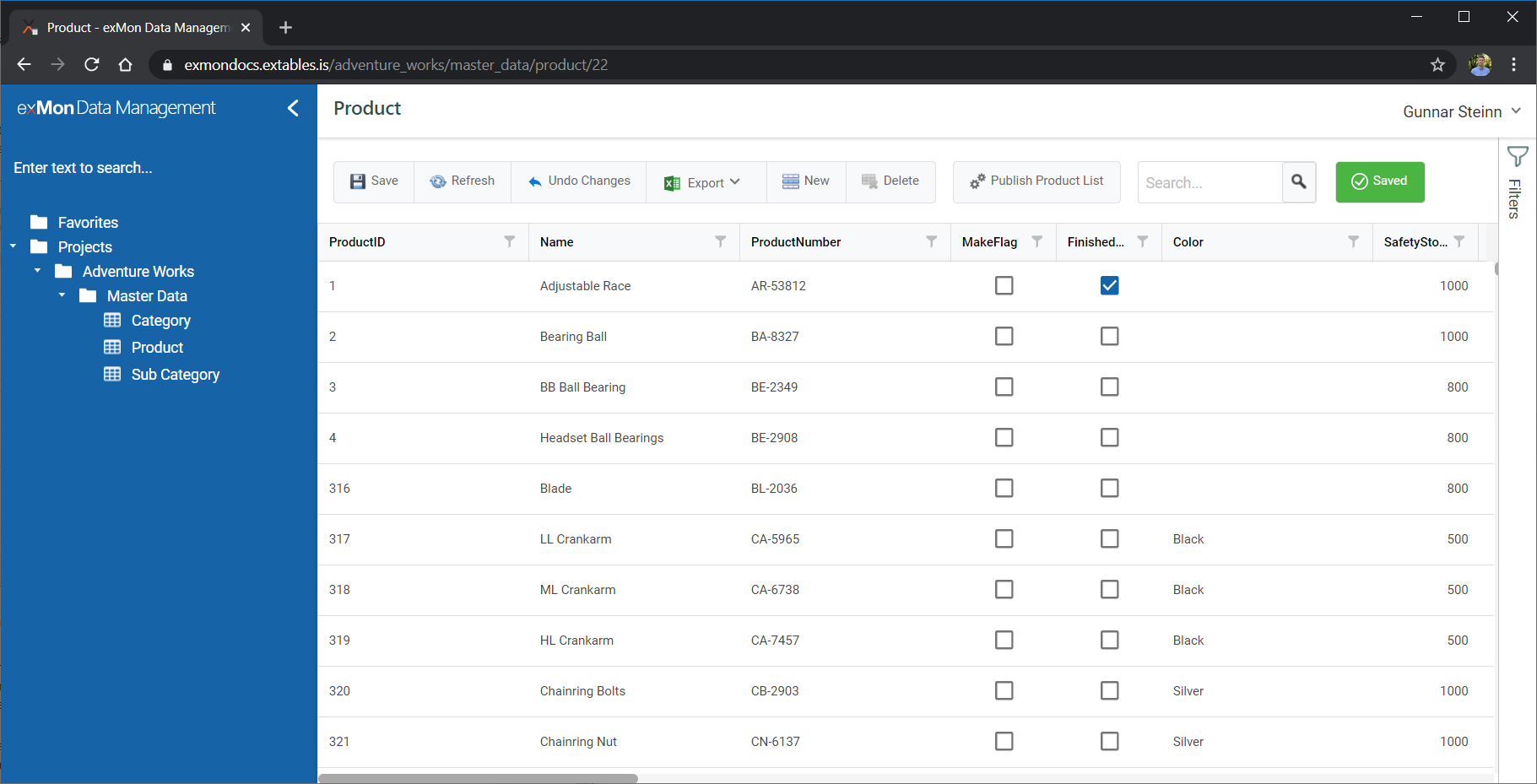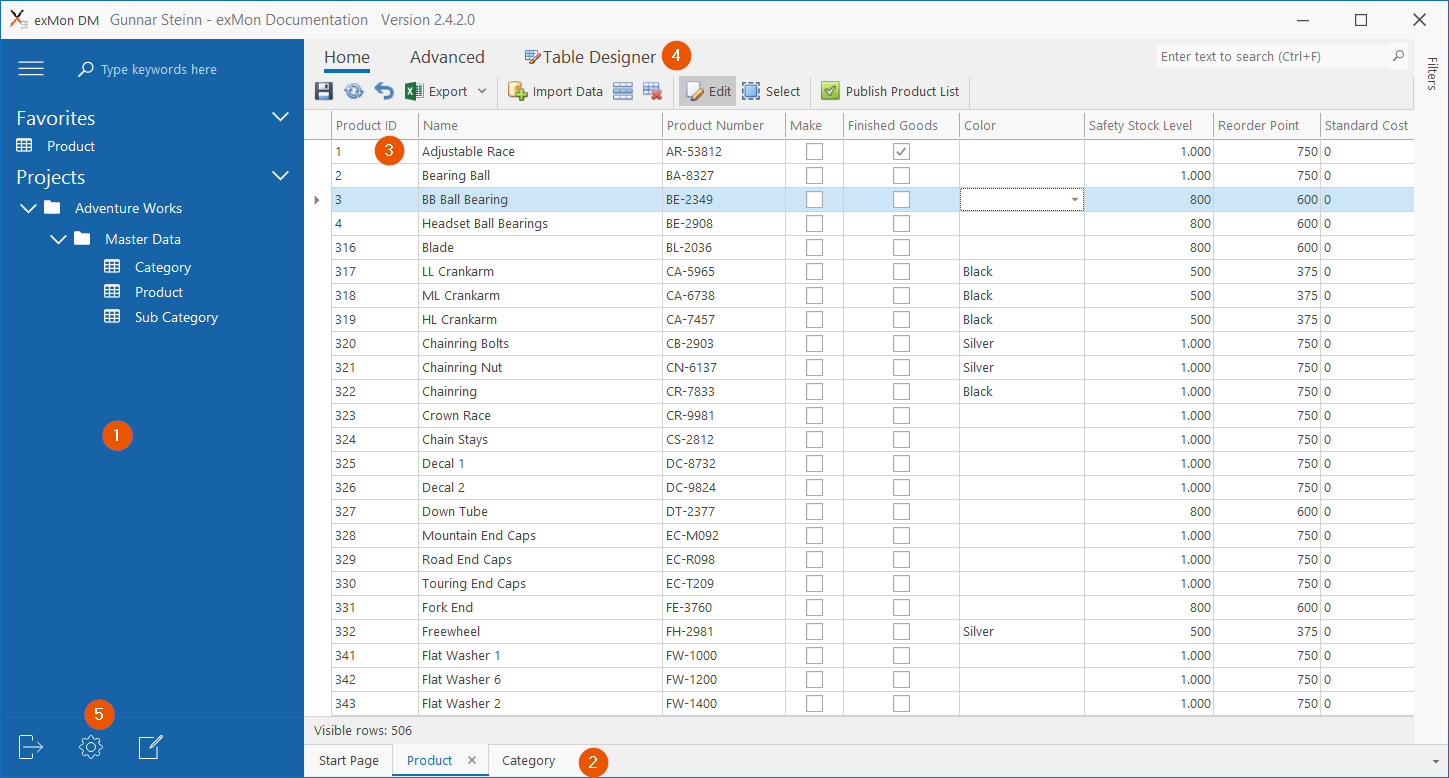exMon Data Management (DM) is a service that allows you to take unstructured data from one or more data sources, combine them, allow end-users to modify and enrich, and finally access and visualize with Business Intelligence solutions.

The most common uses for exMon Data Management are:
- Replace Excel worksheets that contain mappings and master data
- Create hierarchies of accounts, products, departments, etc
- Import data from legacy or third-party systems into a more usable source
- Create an interface for end-users to enrich and validate data
People most often responsible for using exMon Data Management are in Data & Analytics or Master Data Management groups. exMon DM is helpful when simplifying or automating manual processes that rely on unstructured or legacy data.
There are two exMon DM interfaces: exMon DM Desktop and exMon DM Web
exMon DM Desktop
The desktop client is a feature-rich Windows application that allows you to model data, create actions, import data from external data sources and manually edit data. The client is aimed for users to design data models and to enter data.

exMon DM Web
The web client is a lightweight interface for end-users to edit and validate data. The web client does not have all the capabilities of the Windows client.

exMon DM Desktop interface
The desktop client contains a few main interface elements:
- Navigation panel - This is where you find tables you have access to and create new tables and projects. The tables are categorized into Projects and Folders.
- Table Selector - Here you switch between open tables or jump to the Start Page.
- Table Editor - Here you can view, find and modify the data in this table.
- Table Designer - In the designer, you modify the data model, create Table Actions, Table Validations, and create Hierarchies.
- Client Settings - Here you can switch between services, configure exMon DM (such as adding and removing users), and edit Projects.

Next steps
To get started with exMon Data Management, visit the Getting started guide .
